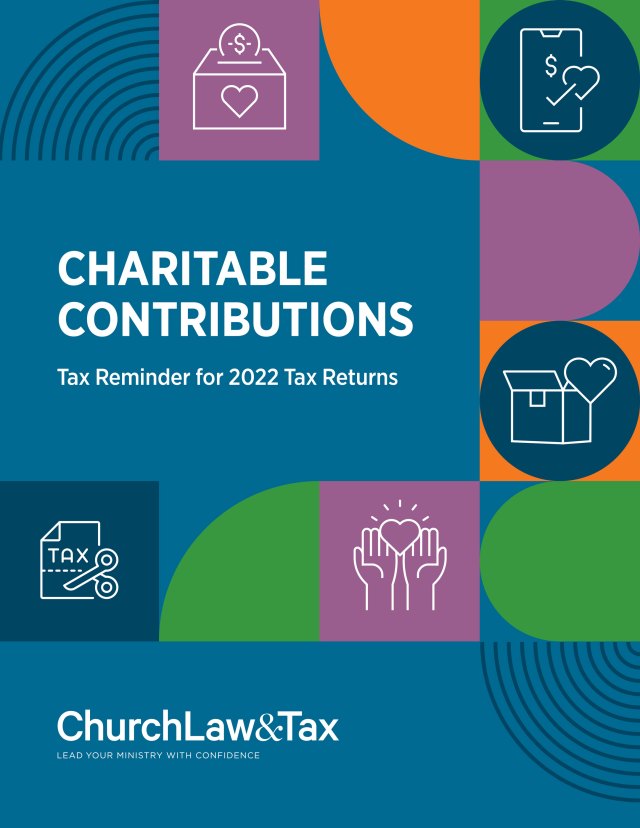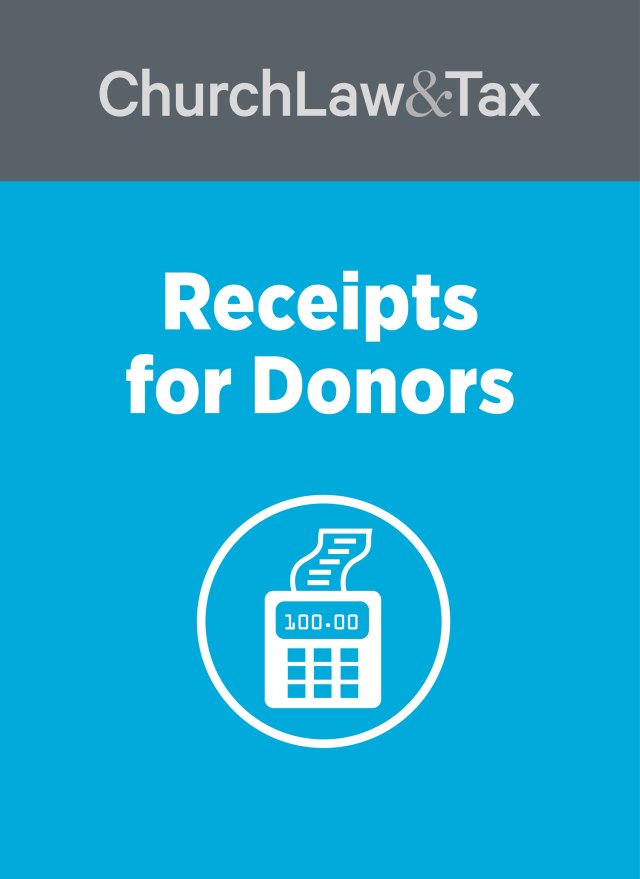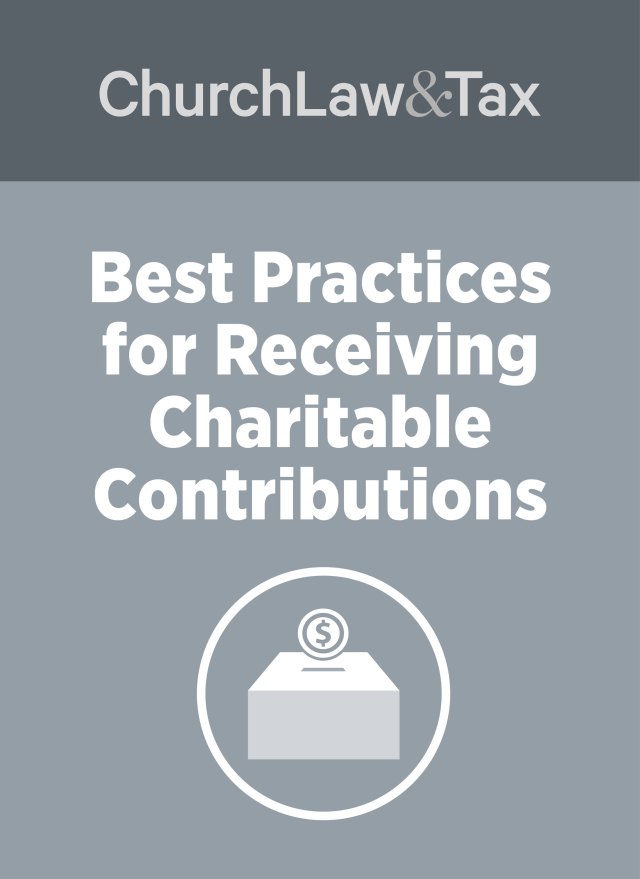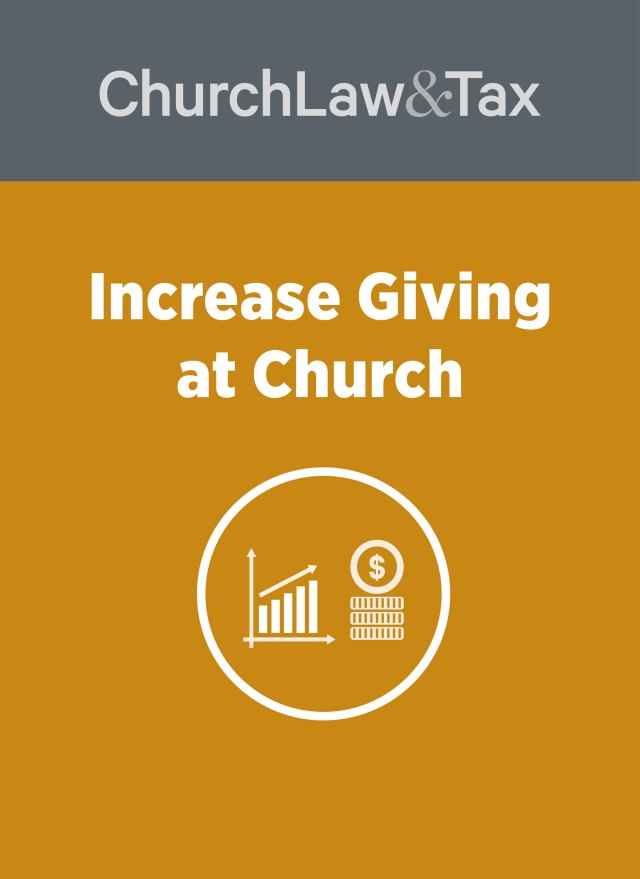Q: Our church received a check made directly from a member’s retirement account for church general operation needs. Should our church issue a tax-deductible contribution receipt to the donor or just give the acknowledgement for receiving the check?
This is a fairly common occurrence for distributions made from individual retirement accounts (IRAs). It is known as a qualified charitable distribution (QCD). This special provision is a great way for individuals with IRAs to contribute to the church or other charities. Reminding your older donors about this option for donating can help them express their generosity and meet required minimum distribution (RMD) amounts they may need to satisfy annually.
What Is a Qualified Charitable Distribution (QCD)?
Individuals over the age of 70½ can direct their IRA custodian to make a distribution directly to a church or qualifying charity. However, churches and donors must understand that QCDs are only available to individuals aged 70½ or older. A QCD allows donors to give generously without treating the distribution as taxable income.
What Should a Church Provide to the Donor?
The donor making the QCD should not receive a tax-deductible receipt because this distribution is not considered taxable. However, the church should provide an acknowledgment letter to both the IRA custodian and the donor. According to the Church & Clergy Tax Guide, the acknowledgment should include:
- The name of the church receiving the donation;
- The amount of the cash contribution; and
- A statement that no goods or services were provided by the church in return for the contribution.
Key Rules for Handling QCDs
- The distribution must go directly from the IRA custodian to the charity; it cannot be transferred to the owner first.
- The maximum annual amount for a QCD is $100,000 per individual. Married couples filing jointly can each make a QCD up to $100,000.
- QCDs must not be recorded as tax-deductible gifts in the church’s donor system, and no tax-deductible receipt should be issued.
- The church cannot provide any benefits, goods, or services in return for receiving a QCD.
QCDs and Required Minimum Distributions (RMDs)
IRA owners aged 72 or older can make QCDs from their IRAs that count toward their RMDs. According to the IRS guidelines on RMDs, a QCD can satisfy all or part of the required amount. Note that Roth IRAs do not have RMD requirements, but Roth IRA owners can still make QCDs beginning at age 70½.
Reporting QCDs on Taxes
The IRA custodian will issue a Form 1099-R showing all distributed amounts. Donors should report QCDs on Form 1040 by noting the amount as a non-taxable distribution. If the entire distribution was a QCD, the taxable amount line should display zero with “QCD” written next to it. For more details, see the IRS Publication 590-B.
Frequently Asked Questions
What are the benefits of QCDs for donors?
QCDs allow donors aged 70½ or older to make tax-free contributions directly to qualifying charities, reducing taxable income while supporting causes they care about.
Can QCDs be made from Roth IRAs?
Yes, Roth IRA owners can make QCDs starting at age 70½. However, Roth IRAs do not require RMDs, so the benefits may differ.
What is the annual limit for QCDs?
The annual limit for QCDs is $100,000 per individual. Married couples filing jointly can each contribute up to $100,000 from their respective IRAs.
Does the donor need to file any additional tax forms for QCDs?
In some cases, donors may need to file Form 8606 if the QCD involves a Roth IRA or traditional IRA with a basis. Always consult a tax professional for guidance.
For additional details on charitable donations and QCD rules, refer to IRS Publication 526.




